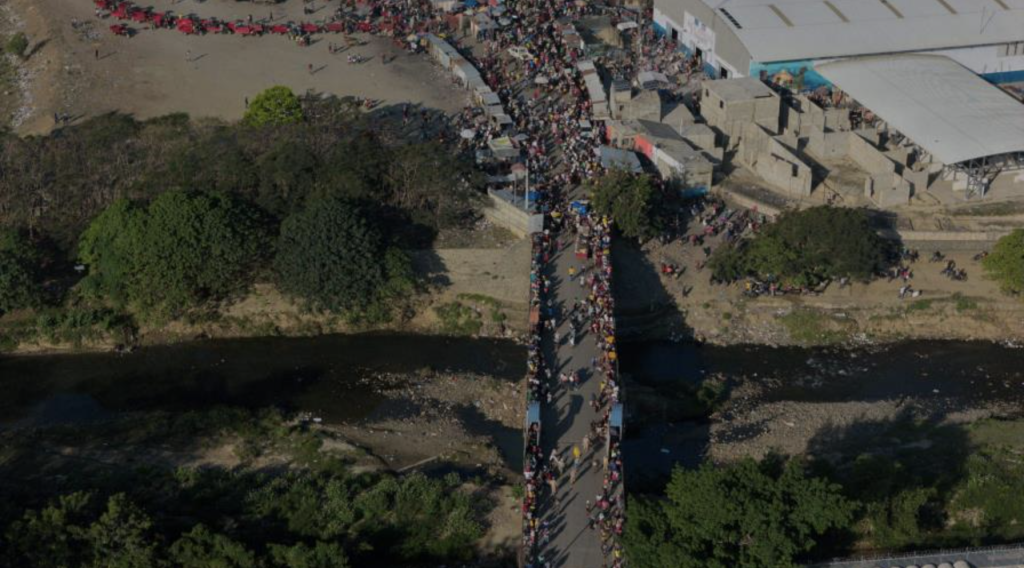
Despite the crisis in Haiti, Dominican border trade with Haiti has solidified its position and continues to be an economic driver, serving as the backbone of the region between Dajabón, Dominican Republic, and its sister city Ouanaminthe over the border in Haiti. Over a thousand small-scale traders converge every week in Dajabon, facilitating a weekly economic flow of over RD$400 million, according to Dajabón’s mayor, Santiago Riverón.
Each morning, the bustling movement of vehicles and people signals another day of commercial exchange. On Mondays, Wednesdays, Thursdays, Fridays, and Sundays, before sunrise over the Masacre River, thousands gather at the border bridge connecting the two towns. Diario Libre reports that this binational market is more than just a trading hub; it symbolizes life, struggle, and hope for thousands of merchants from both nations.
For many, the binational fair means the difference between subsistence and deprivation. Haitian traders bring what they can sell—clothing, shoes, and other items—and their clients, both Dominican and Haitian, understand that each sale provides a meal for a family across the border.
In Ouanaminthe on the Haitian side of the border, there is a binational trade venue built years ago by the European Union. Diario Libre reports that the Haitians have not been able to agree among themselves to put it in operation, leaving only the binational facility in the Dominican side of the border.
“The Dajabón border market is the backbone of this region’s economy, benefiting much of the country,” Santiago Riverón, mayor of Dajabon told Diario Libre. Haitian traders carry bags of Dominican rice, oil, and agricultural products through Dajabón’s streets, while locals display textiles, appliances, and second-hand clothing. Women with children on their backs negotiate prices in a mix of Spanish and Creole, as young entrepreneurs push carts or drive trimotors laden with goods.
“Over 400 million pesos are moved weekly among these markets,” Riverón highlights. Dominican traders rely on this steady stream of Haitian buyers to sustain their businesses. From large distributors to street vendors, all are impacted by the market’s dynamics. There are over 1,700 registered sellers handling sales and product distribution to Haitian shoppers who cross weekly for the market.
Haiti is the second-largest export destination for the Dominican Republic despite that country’s political instability and security crisis. The primary currencies in this trade are the Dominican peso and the American dollar, though Haiti’s gourde is also accepted among Haitians. The Center for Exports & Investment of the Dominican Republic (ProDominicana) says that export volume from January-February 2025 was US$1.96 billion, up 8.5%.
While the situation in Haiti, characterized by armed gang control over much of the territory, severely impacts its economy and external trade capabilities, the bilateral market persists as a crucial pillar for regional economics.
The regional trade in some way compensates for the enormous burden the Dominican Republic carries due to the collapse of social services in Haiti. This has resulted in hundreds of thousands of Haitians, most without any identity papers, commuting or migrating to the Dominican Republic to receive medical or educational services or to make a living. Likewise, the government has been investing heavily in arming the Dominican military stationed at the border and in the construction of fences at key points known for intense border crossings.
Read more in Spanish:
Diario Libre
24 March 2025

